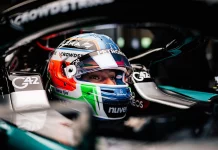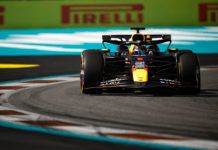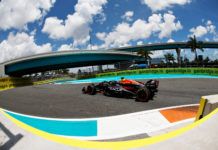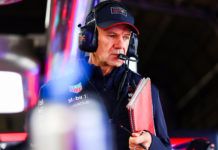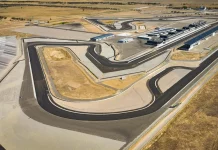James Vowles talks about years of underinvestment in Williams F1 Team and how he is tackling and building a base to push it forward.
Its been a hard and long journey for Williams in the past few years. Before the sale to Dorilton Capital, the Grove-based F1 team had some disastrous time especially when they even failed to make it on time for the pre-season test in 2019.
It was one of the biggest lows for Williams in recent time as not having pace is still acceptable in a certain way as opposed to not being able to get a car ready for a new F1 season. Coming in, Vowles has highlighted on the years of underinvestment.
In fact, he feels that Williams hasn’t had enough money for the past 20 years which is why they are in a situation where they are at the moment. Vowles went through in detail about the CapEx and how the team has been and are trying to evolve now.
Considering that Vowles only arrived just at the pre-season test in 2023, he notes that Williams were in a survival mode and he immediately had to sort the team’s future looking long-term rather than taking short-term decisions and fulfilling his job.
At the moment, Vowles is setting up things to help Williams in future. One of the prime examples is not hiring a technical director straight up but taking time to secure the services of the right candidate. He also talks about building a culture in the team.
Infrastructure of Williams and scene now –
Vowles: “So, 20 years of underinvestment is why we are where we are today. But I’m in a fortunate position that my predecessors weren’t – where we have investment, significant investment, behind us. In fact, there is a strong desire to have Williams return back to a competitive position. But to do that requires investment. So the money’s available and ready. The cost cap itself is split into two things. There’s an operational cost cap, which is about 145 million US, which everyone knows and talks about, probably, the most frequently. Perhaps more hidden than that, there is a CapEx, a capital expenditure version of the cost cap. That’s round about, it’s a bit complicated, but 36 million spread across four years. But if you like, every year you can spend six or seven of that, if you just do it fairly equally. That’s good in as much as it’s restricted down spending. But in many regards, where we are today, that money is disappearing on what I think is basic infrastructure.
“So if I take an example of things that were in Williams, and this is being very transparent about it, when a designer releases a part, it sort of goes into a black hole. And then there’s emails going backwards and forwards between production to try and find out where their part is, how it’s being upgraded, how big it is, how long it will take. Normally, that would go into a digital system that can be tracked, so you understand actually, what does the car get made up of. And bear in mind, there are 17,000 components and by the time you have designers doing this 17,000 times, you get lost. So you have inefficiencies. That software to fix that isn’t, unfortunately, 100 pounds, but that’s millions, and even up to 10s of millions if you get it right. So, CapEx for me, at the moment, my expenditure was more spent on trying to get some infrastructure in place, so at least we know how long it takes to design space.
“It’s all publicly available. But if you actually go look at companies house, you can sort of see that the numbers we’re talking about here is hundreds of millions, not 10 million, or 20 million, but hundreds of millions to sort of catch up with the level of investment, from where Williams is today, to perhaps the most extreme expenditures you see in the sport. That’s a big deficit. And what it’s leading to is… Formula 1, the FIA and other teams have been supportive in this, what we’re looking for at the moment is the ability to have sporting equity, the ability to have infrastructure that matches our peers, such that we’re not fighting with one hand behind our back, but fighting in the same way as other people are.”
Increase in CapEx expenditure –
Vowles: “For us, certainly, where we are at the moment the numbers aren’t small. In fact, they’re scarily large and what we would have to spend on the site and on infrastructure… The site’s OK, that’s actually external to the cost cap, interestingly enough, but on machines, for example, or simulators, or the software I was talking about here, or your composites facilities, or and I can give you a list, there is a list, in fact. What we’re looking for is the ability to show where we are today, where the benchmark is, and the ability to spend in order to catch back up to that benchmark.”
Coming into Williams and sorting things –
Vowles: “So, first of all, team spirit was high, given that they had gone through what I think was an incredibly difficult winter, when there was large change at all management levels, and to a certain extent, a lack of leadership at that point, as well. But the morale was high and in fact the build that they did, without much structure around it, was very impressive. I mean, I’ve quoted it before in the media, but 17,000 components coming together, and the thing has four wheels pointing the right way is impressive out of it. There’s definitely a sentiment now, I’ve described it as you can see people’s heads are held high, the shoulders are up, they can see a direction of travel for how we’re going to pull ourselves out of this, which is not the same as going round in a circle.
“The best way to describe it is that the team was in a survival mode, where what it was thinking about was what do we need to do get ready for the next race to go forward? That’s not how Formula 1 works anymore. What you’re thinking about now, already, is 2024, 2025 and 2026. And if you’re not thinking that far ahead, you’re going to fall behind against competitors that are. And that cultural change will take quite a while to properly kick in because it’s very different. You’re now not thinking about the carbon bits appearing in Montréal, but you’re thinking about what do you want the car to look like in two years’ time. And I think that’s the direction of travel that’s helped everyone understand how we are going to pull ourselves out of the performance region we are today.”
Things to be done in next couple of seasons –
Vowles: “I think the key one is the one I brought up here, which is, if you don’t have a digital infrastructure, where you know where a part is, how long it takes, how many parts you need, what is an assembly built up of, you are lost from the beginning. And, actually, I think that’s an accolade to what Williams was, because you need a huge amount of teamwork in order to understand what you’re doing with this. I would describe it as human glue, but very good human glue. And that’s what was in place. And that infrastructure will really make a difference. Because just understanding how long it would take to produce something could be a tremendous improvement over where we are today.
“And also means you can start planning properly in the future for your updates what you want and where you’re going to. Over the next few seasons, what’s very clear is that our competitors are bringing tremendous amounts of performance to the car quicker than we’re bringing it to the car. We have to address that and improve that. And very clearly as well, the car has some characteristics where it works well at some tracks, this will be one of them, and at others it’s quite poor. And we’ve got to really start addressing that through some base fundamentals. So I would say all areas of the organisation have targets for how we’re going to improve and all will deliver performance if we can get them right.”
Getting things done –
Vowles: “I think there’s an expression, it’s not mine, that culture eats strategy for breakfast and I completely buy into that. You can have as many strategies as you want but your culture is actually what dominates the drum beat of the organisation. And your culture is everything. So that there’s a culture of failure, which very much came from Mercedes, that’s very strongly what I believe in. Openness, communication, teamwork, all of those cultures I strongly believe in. They don’t appear overnight, just because I say this is the culture I’d like. In fact, culture comes from your organisation.
“All you can do is mimic behaviours that you want out of it and reward your lieutenants that effectively follow the guise of where you want to go. But culture is everything. If you look at what we have, there’s fundamentally up and down the grid, each team has between 800 to 1,000 incredibly intelligent individuals working day and night in order to produce a car that moves forward. So, now you need to start finding your differentiators and your differentiators come from just those that are slightly better at talking, communicating and working together. And that’s what culture drives.”
Here’s Andrea Stella being impressed by Williams
Here’s Alexander Albon on Williams’ strategy
Here’s Lando Norris on battles behind Alexander Albon


